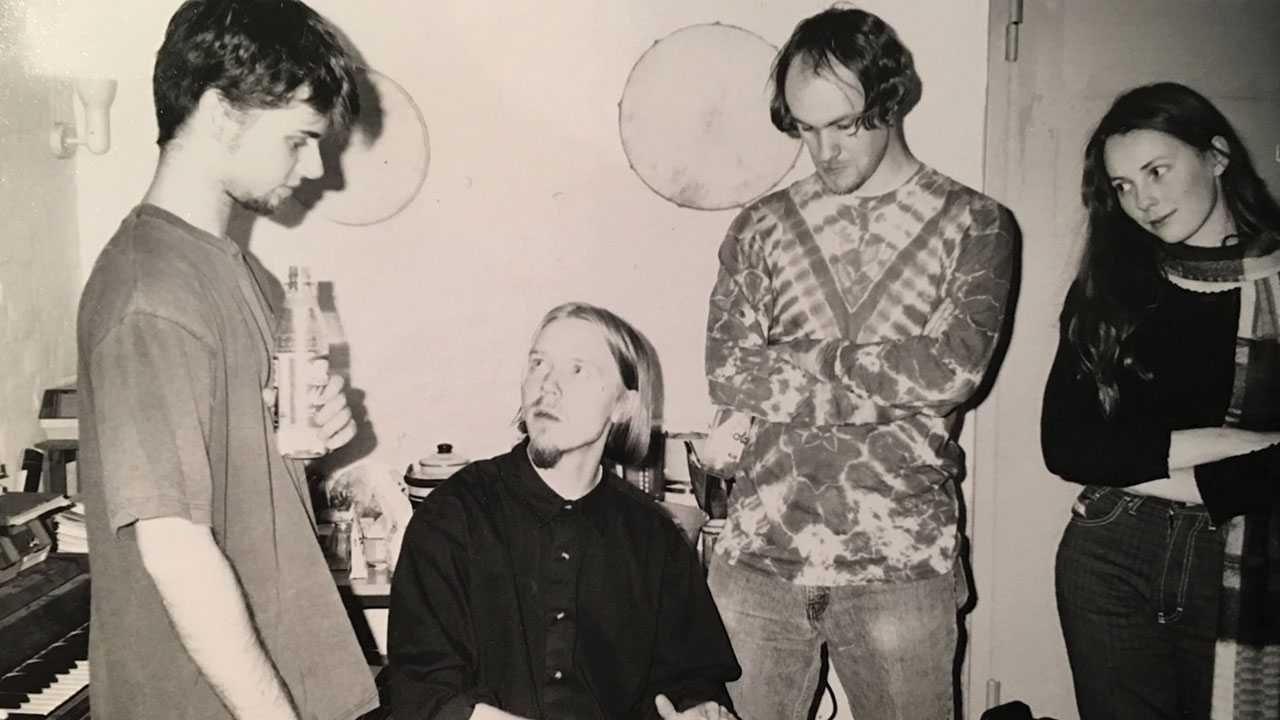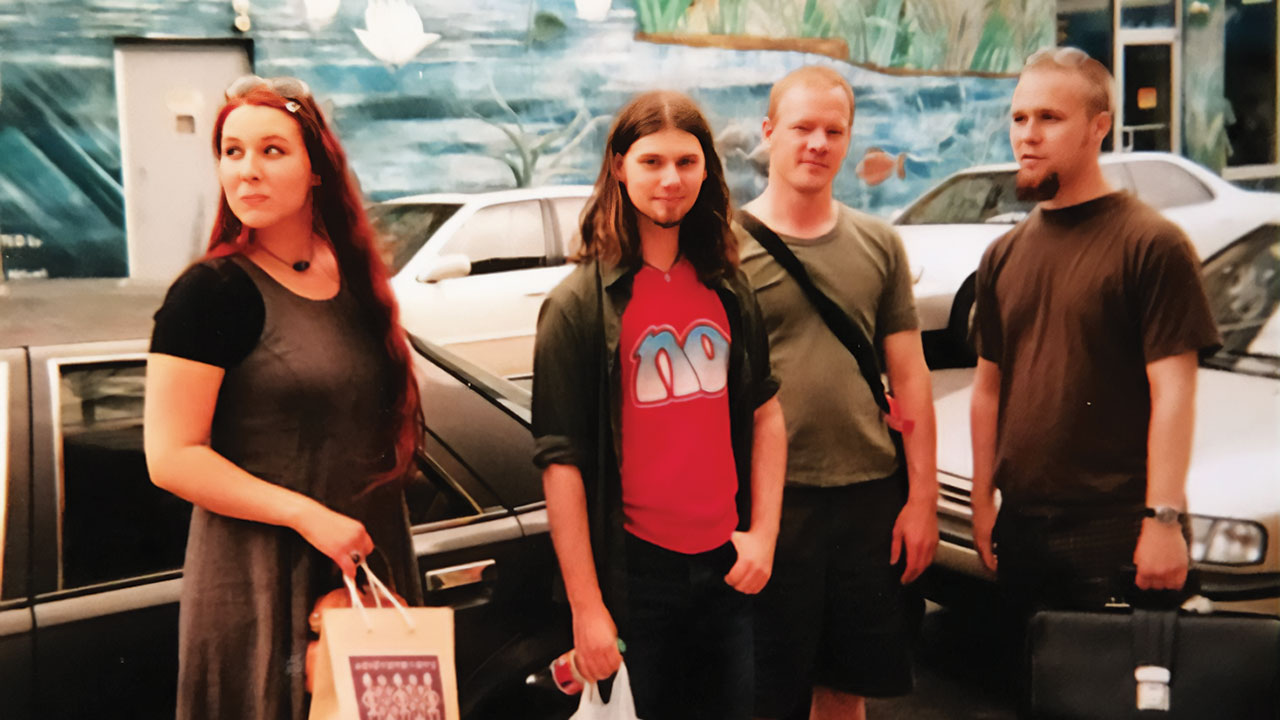By 2024, Norwegian prog rockers White Willow had been in the midst of a reissues marketing campaign that may see their again catalogue remastered and reissued. On the midway level, mainman Jacob Holm-Lupo informed the story of the band’s evolution…
Within the early 90s, progressive rock was starting to sprout just a few inexperienced shoots of restoration. Sustained by its personal international neighborhood of die-hard followers and musicians, it was firmly off the mainstream radar, and plenty of of those that efficiently contributed to its rebirth had been working alone, unknowingly anticipating the arrival of the web to make the whole lot lots simpler. In Norway, which already had a wealthy custom of prog bands, a really younger Jacob Holm-Lupo was starting to discover his personal love of adventurous rock music. Now often known as the person behind White Willow and a bunch of different notable initiatives, he began his life as a prog musician with no expectations in any way.
“We weren’t conscious of any form of international prog scene in any respect, really,” he says with a smile over video-call. “I acquired into this music once I was 12 years previous, and I used to be given a tape of Duke by Genesis for my birthday. From then I used to be completely hooked. In my late teenagers I began enjoying with some pals. It was the keyboard participant from White Willow, Jan Rahman, and myself, and we recorded a few demos in my front room. That will need to have been in ’91 or ’92, then we put a band along with like-minded pals who additionally preferred progressive rock, and we recorded some extra demos. However we didn’t assume something extra would occur.”
He might have been blissfully unaware of prog’s rising momentum, however Holm-Lupo’s imaginative and prescient was completely in tune with what was happening elsewhere on this planet. White Willow emerged blinking into the sunshine with their 1995 debut album, Ignis Fatuus, which was launched by way of US prog imprint The Laser’s Edge, who had been among the many recipients of these early demos. Practically 30 years later, the Norwegians’ contribution to trendy prog is past dispute, however the re-releasing of their catalogue of fascinating, fervently progressive albums is lengthy overdue. Fortunately, these good folks at Karisma Information have begun an in depth reissue marketing campaign, which incorporates six of White Willow’s seven albums, some showing on vinyl for the primary time, and all remastered by Holm-Lupo himself. The primary three albums – Ignis Fatuus, Ex Tenebris (1998) and Sacrament (2000) – are already out, with the remainder to comply with within the close to future.
In some ways, Ignis Fatuus is probably the most intriguing of all White Willow albums, primarily as a result of it’s the one document made by the band’s first (and solely) full line-up. Closely influenced by psychedelic people however rooted in old-school prog concepts, it captured the thrill of the younger Norwegians’ first wholehearted try to show musical goals into actuality.
“I feel, particularly on the primary album, it was a results of all of us having some issues in widespread,” says Holm-Lupo. “All of us preferred English progressive rock and Italian progressive rock, but in addition some folks had been interested by people music, some had been into classical music, and for myself, I used to be into rock. So all these issues got here collectively on that album. Since then it’s been a relentless means of making an attempt to meld all these influences into one coherent sound. However I’m nonetheless combating it, as a result of I’m fully omnivorous in the case of music, so it’s arduous to commit to 1 fashion.”
One factor that White Willow have been resolutely dedicated to is the
use of plaintive feminine vocals. Whereas prog rock was (and nonetheless is, to a point) a sausage-fest, Holm-Lupo took a special strategy from the beginning, with singer Sara Trondal enjoying a central position all through Ignis Fatuus, and significantly on dewy-eyed people mirages comparable to Snowfall and Now In These Fairy Lands. Feminine vocalists have continued to play a significant half in White Willow’s music ever since, regardless that Holm-Lupo insists that there was no grand masterplan.
“To be sincere, it was virtually by likelihood,” he says with a shrug. “We had been just a little gang of individuals, and those that loved what we had been doing and had an curiosity in it, and who may additionally sing, occurred to be women. That was principally it. It wasn’t a acutely aware choice. When the primary album got here out lots of people in contrast us to Renaissance, however we hadn’t even heard of them! However I feel, by way of band chemistry, it’s good to have women as a result of it helps communication just a little bit. Guys can get very aggressive and macho! However having women current has made us all relax just a little bit and hear to one another, so it’s been simpler.”
One thing essential occurred when White Willow recorded Ignis Fatuus: Jacob-Holm Lupo felt very a lot at dwelling. Lately, he makes a residing from recording, mixing and mastering different artists’ work: the fruits of a love affair with the studio that started practically three a long time in the past.
“It was our first time within the studio and it was enjoyable!” he smiles. “It was
a basement studio in Oslo. It was fairly primitive, only a 16-track analogue recording. Due to all of the overdubs it was fairly advanced. Within the mixdown, each member of the band needed to sit with their arms on faders. These had been the times! [Laughs] So it was our first expertise, and for me, very attention-grabbing. I realised as soon as I used to be in that studio that I really loved being within the studio greater than I loved being onstage, in order that’s what I’ve accomplished since then.”

White Willow have been virtually solely studio-based for no less than the final 20 years. Their final present was at Summer time’s Finish Pageant when it was at Bilston in 2006, and Holm-Lupo has made completely no noises about wanting to provide reside efficiency one other go. At this time, he admits that declining to play reside has had some damaging impression on his band’s fortunes, however that even with a reissue marketing campaign in full movement, he believes he has made the proper selection.
“It has been detrimental that we haven’t performed reside now for a protracted, very long time. However personally, for me, it’s lots higher as a result of I’ve time to concentrate on songwriting, I’ve time to work in my studio and to truly make a residing. There’s by no means any residing to be produced from enjoying live shows anyway. However
lots of people come to me and say, ‘Why don’t you play reside? You’d be extra well-known and promote extra data!’ However that was by no means why I did this within the first place. I do that as a result of I like doing it, and I like sitting in my studio and fiddling round, you recognize?”
Maybe the primary actual proof of Holm-Lupo’s studio obsession arrived with White Willow’s second album, 1998’s Ex Tenebris. A darker and stranger document than its predecessor, it was initially meant to be a solo album, however label bosses had been keen for an additional album underneath the band’s title. Written and recorded within the aftermath of the primary White Willow line-up disintegrating, Ex Tenebris was a daring step into the unknown.
“After we’d performed at ProgFest in Los Angeles, which was late in 1995, the band broke up. We went by way of just a few a line-up modifications, however in the long run it didn’t work. I used to be going to make a solo album of some extra gothic-sounding stuff, so I wrote songs and began recording, however then the label got here to me and mentioned, ‘Nobody is aware of who you’re, and we’re not going to have the ability to promote a document by Jacob Holm-Lupo, so are you able to please discover a strategy to make this White Willow…’ And so I did. I discovered the spark once more and I discovered my love for the style once more.”
If the primary White Willow album had been intentionally backward-looking and in thrall to the late 60s and early 70s, the second was a lot much less straightforward to outline. At instances primitive and minimal, songs like Leaving The Home Of Thanatos showcased the maturing of Holm-Lupo’s songwriting, whereas additionally leaving house for extra experimental variations on cherished prog themes.
“Ex Tenebris was kind of the place I used to be looking for my footing by way of being a songwriter and a producer,” he explains. “It was about what White Willow was going to be going ahead. So it was an experiment. For me it was kind of remedy, too. I really went into an actual despair after the primary document. Every thing was so hopeful after we launched Ignis Fatuus and everyone liked it. We acquired a variety of consideration, and I used to be like, ‘OK, that is it. I’m going to be a prog-rock star!’ [Laughs] Then the band simply imploded and I additionally didn’t know what to do with myself. Ex Tenebris is Latin for ‘out of darkness’, so this was my method out of darkness.”

If Ex Tenebris was a mandatory response to difficult instances, White Willow’s third album was a assured leap into the longer term. Launched on the daybreak of a brand new millennium, it retained a lot of the psychedelic lushness
and ingenious songwriting that had made Ignis Fatuus and Ex Tenebris so irresistible, but in addition embraced a broader array of inspirations, together with some unexpectedly up to date ones.
“Shortly after I made Ex Tenebris, I discovered the folks that may be on Sacrament, these nice musicians that I actually get together with, and who shared my imaginative and prescient,” Holm-Lupo remembers. “Making the third album was a particularly constructive expertise. But it surely was at the moment that I began to essentially soak up what was happening round me. We had been all listening to the French band Air. OK Laptop had, in fact, penetrated into our world. So there have been just a few extra outdoors influences, and extra of a sense that there have been issues in up to date rock that had been related to us.”
Regardless of waiving the proper to carry out their music reside, White Willow have been a gradual presence in trendy prog. For the uninitiated, three extra albums might be re-released by Karisma sooner or later – Storm Season, Sign To Noise and Terminal Twilight – and Holm-Lupo has agency plans to start out work on his band’s first music since 2017’s Future Hopes. The studio dream lives on.
“I’m really engaged on the brand new album now,” he notes, wanting genuinely excited. “We haven’t completely landed on a line-up but, however it’ll definitely be me and Lars Fredrik Frøislie from Wobbler, and Mattias [Olsson] from Änglagård… and we’ll simply should see who the remainder might be! [Laughs] However we agreed that what we wished to do was have a look at what we’ve been pleased with up to now, and issues that basically labored for the band, and to concentrate on these. So I feel it’ll be a really robust and constant album, and the fabric we’ve to date is superb, so fingers crossed. My ambition is all the time to attempt to make the right album. I haven’t but, however I’m nonetheless making an attempt!”
